Clicker training is an excellent way to teach your dog advanced commands, combining positive reinforcement with clear communication. Start with the basics, ensuring your dog understands fundamental commands like sit and stay. Use the clicker to mark desired behaviors at the exact moment they occur, followed by a treat to reinforce the connection. As your dog masters prompts like "heel" and "come," gradually introduce more complex tricks. Keep sessions engaging and maintain consistency to build your dog's confidence. If you want to discover more effective techniques, strategies, and troubleshooting tips, keep exploring the various aspects of clicker training.
Understanding Clicker Training
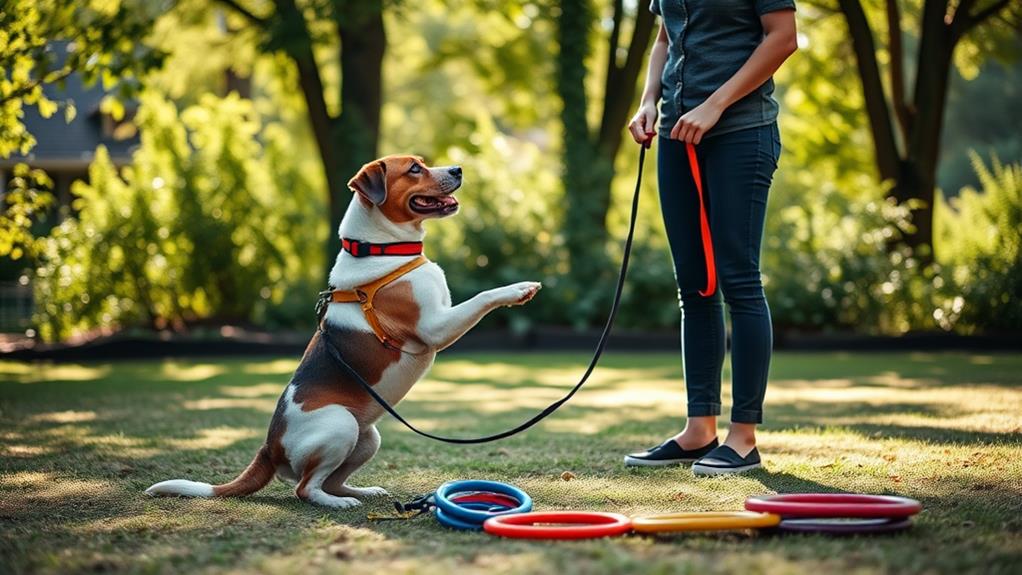
Clicker training is an effective method that combines positive reinforcement with a distinct sound to mark desired behaviors in your dog. This technique relies on a small device that makes a clicking noise when pressed, signaling to your pup that they've done something right. It's crucial to understand the timing and consistency involved in using the clicker. You'll need to click the moment your dog performs the desired action, whether it's sitting, staying, or any other command.
Start by introducing the clicker to your dog. Let them hear the sound and immediately reward them with a treat. This helps them associate the click with something positive. Once your dog understands the connection, you can begin to apply it to more complex commands.
Benefits of Clicker Training
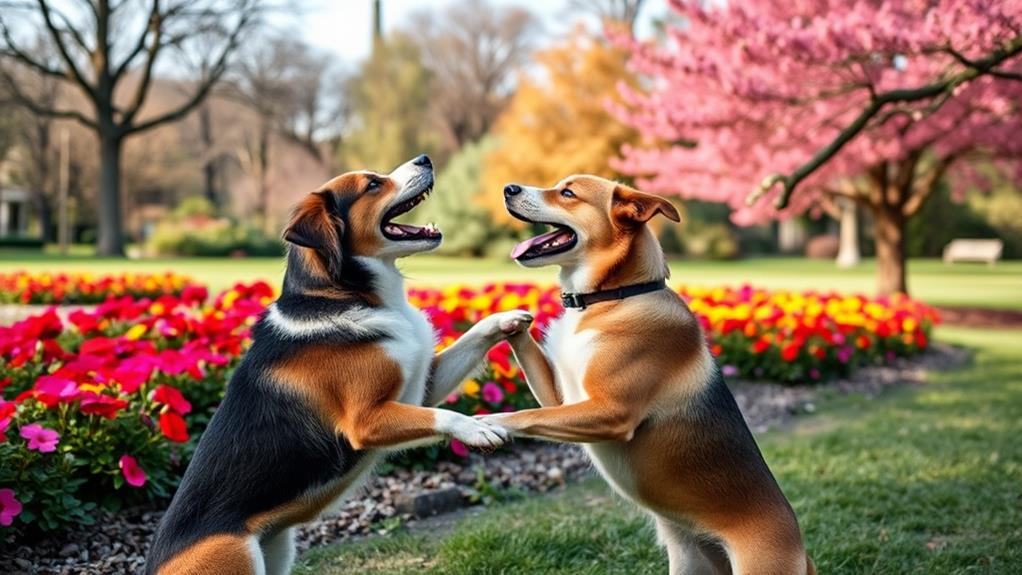
Using clicker training offers numerous advantages that can enhance the learning experience for both you and your dog. One of the biggest benefits is that it promotes clear communication. The clicker provides a distinct sound that marks the exact moment your dog performs the desired behavior, making it easier for them to understand what you want.
Additionally, clicker training is highly effective because it relies on positive reinforcement. Your dog learns to associate the click sound with a reward, such as treats or praise, which motivates them to repeat the behavior. This method fosters a strong bond between you and your dog, as they feel encouraged and appreciated.
Clicker training is also versatile. You can use it for a wide range of commands and tricks, and it's suitable for dogs of all ages and skill levels. Plus, because the clicker is portable and easy to use, you can train anywhere, turning everyday moments into learning opportunities.
Preparing for Advanced Commands
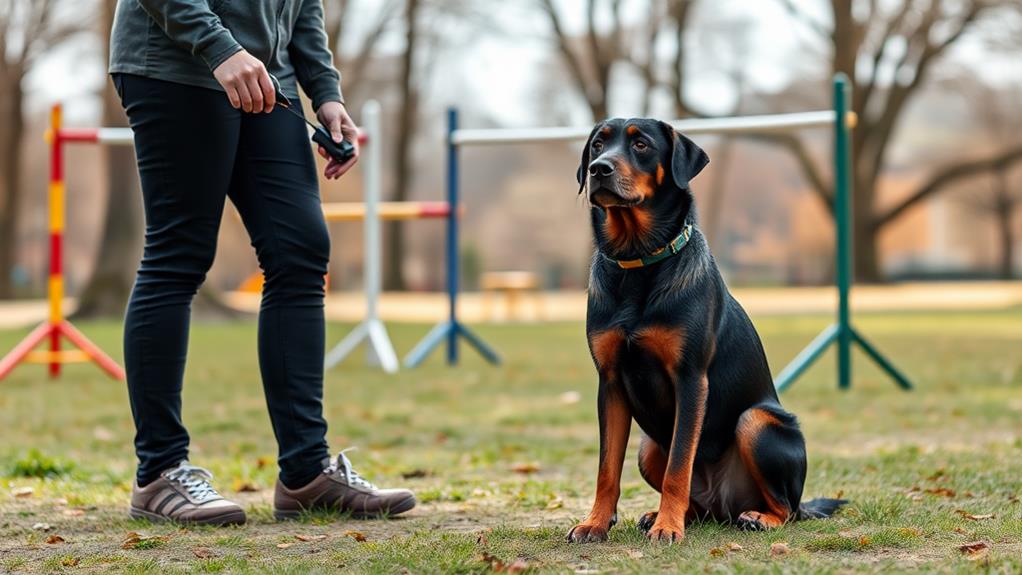
Before diving into advanced commands, it's crucial to confirm your dog has mastered the fundamentals. Guarantee your pup is proficient in basic commands like sit, stay, come, and down. This solid foundation will make it easier for both of you as you move forward.
Next, assess your dog's focus and engagement levels. If your dog struggles to pay attention during training sessions, it may be advantageous to work on their concentration first. Keep training sessions short and fun to maintain their interest.
Consider your dog's personality and energy levels when preparing for advanced commands. Some dogs thrive on mental challenges, while others may require more physical activities to stay engaged. Tailor your training approach to suit their unique traits.
Gather the necessary tools, such as a clicker, treats, and a comfortable training space free from distractions. Consistency is key, so establish a routine that both you and your dog can follow.
Essential Clicker Training Techniques
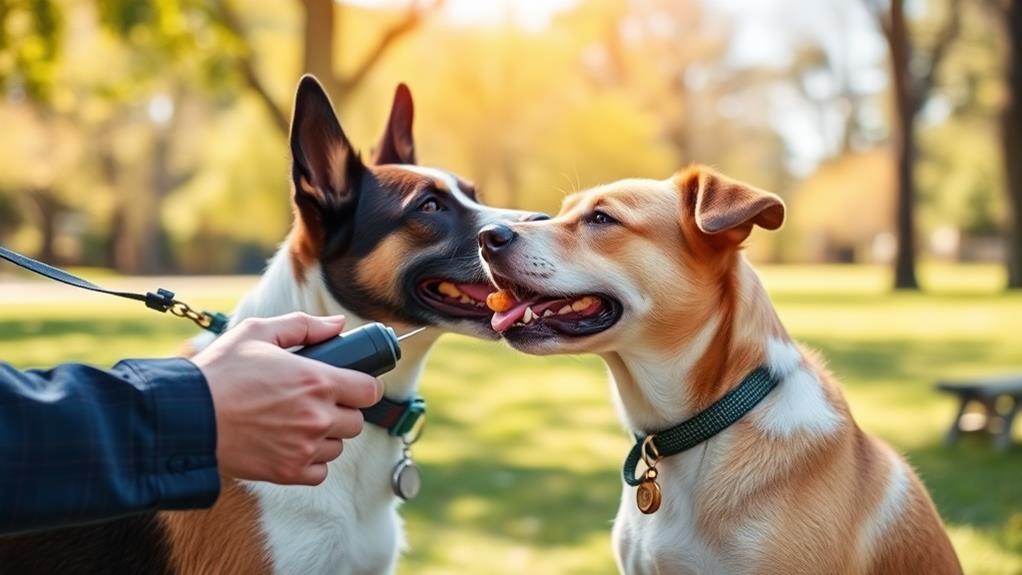
When it comes to teaching advanced commands, mastering essential clicker training techniques can make a significant difference in your dog's learning experience. Clicker training relies on positive reinforcement, so it's imperative to be consistent and clear in your approach. Start by timing your clicks to coincide with your dog's desired behavior, which allows them to make the connection between the action and the reward.
Here's a quick reference table to help you remember key techniques:
| Technique | Description | Tips |
|---|---|---|
| Timing | Click immediately when your dog performs the desired action. | Practice with low distractions first. |
| Consistency | Use the same clicker sound and reward type each time. | Involve all family members for uniformity. |
| Reward Variety | Mix up treats or toys to keep your dog engaged. | Observe what excites your dog the most. |
Teaching the "Heel" Command
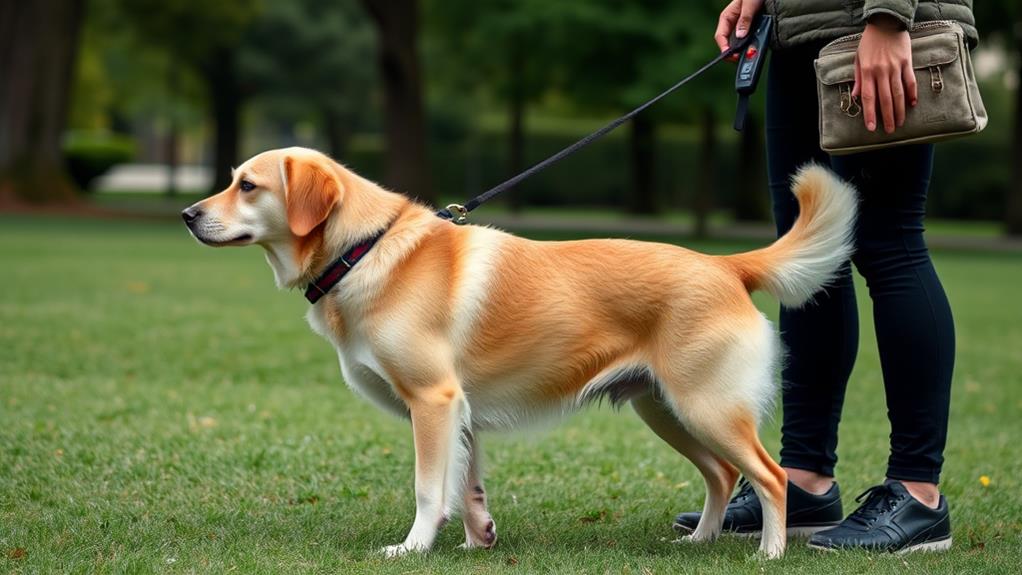
Mastering the "Heel" command can elevate your dog's obedience and enhance your walks together. To start, gather your supplies: a clicker, treats, and a leash. Begin in a quiet area with minimal distractions.
With your dog on a leash at your side, say "Heel" and gently encourage your dog to walk beside you. As they start to move, keep the treat close to your leg to guide them into the correct position.
When your dog stays by your side, immediately click and reward them with a treat. Consistency is key. If they pull ahead or lag behind, calmly redirect them back to the heel position. Practice this in short sessions to maintain focus and enthusiasm.
Gradually increase the level of distraction by practicing in different environments like parks or busy sidewalks. Always reward your dog for maintaining the heel position, reinforcing the behavior you want.
If your dog starts to get it, you can add variations like changing your pace or turning in different directions. This keeps the training fun and engaging. With patience and lots of praise, your dog will master the "Heel" command, making your walks more enjoyable for both of you.
Mastering the "Stay" Command

Consistently teaching your dog the "Stay" command can vastly improve their impulse control and safeguard their safety in various situations. Start in a quiet environment with minimal distractions. Position your dog in front of you, and give the command "Stay" while holding your hand up, palm facing them.
As your dog remains in place, take a step back. If they stay, reward them immediately with a click and a treat. If they move, calmly return them to the starting position without scolding. Consistency is key; practice in short sessions to keep your dog engaged.
Gradually increase the distance and duration of the "Stay." Once your dog masters the command at a short distance, challenge them by adding distractions, like toys or another person. Remember to always reward their success, reinforcing the behavior you want to see.
Use varying environments—practice in the backyard, at a park, or even inside your home. This helps your dog generalize the command, making it applicable in different situations. With patience and persistence, your dog will master the "Stay" command, enhancing their obedience and safety.
Introducing "Come" With Clicker

Introducing the "Come" command using clicker training can strengthen your dog's recall and enhance their safety during outdoor adventures. To get started, find a quiet space free from distractions. Begin by calling your dog's name followed by the word "come." You want to make this sound exciting and inviting. When your dog approaches you, immediately click the clicker and reward them with a tasty treat.
Consistency is key. Repeat this exercise several times, gradually increasing the distance between you and your dog. If your dog doesn't come right away, avoid punishment. Instead, try using a higher-value treat or a playful tone to encourage them.
Once your dog reliably responds in a controlled environment, practice in different locations with distractions. This helps reinforce the command and builds their confidence in responding to you, no matter where you are. Always remember to reward your dog every time they come to you, especially in the early stages of training.
With patience and repetition, your dog's recall will improve, making outdoor activities more enjoyable and safe for both of you. Keep training sessions short and fun to maintain their enthusiasm!
Advanced Tricks: Roll Over

Once your dog has a solid grasp of the "come" command, you can start teaching them more advanced tricks, like "roll over." This fun trick not only impresses friends but also strengthens your bond with your dog through engaging play.
To teach "roll over," follow these simple steps:
- Get your dog's attention: Use a clicker and treats to motivate them. Start with your dog in a down position.
- Guide them with a treat: Slowly move the treat towards their shoulder, encouraging them to roll onto their side. As they do this, click and reward them.
- Add the cue: Once they understand the action, start saying "roll over" as you guide them. Gradually phase out the treat until they can do it on command.
Practice regularly, and be patient; some dogs may take longer to learn. Celebrate their progress and keep training sessions short and fun. With consistency and encouragement, your dog will be rolling over like a pro in no time! Enjoy showing off this impressive trick to your friends and family!
Troubleshooting Common Issues
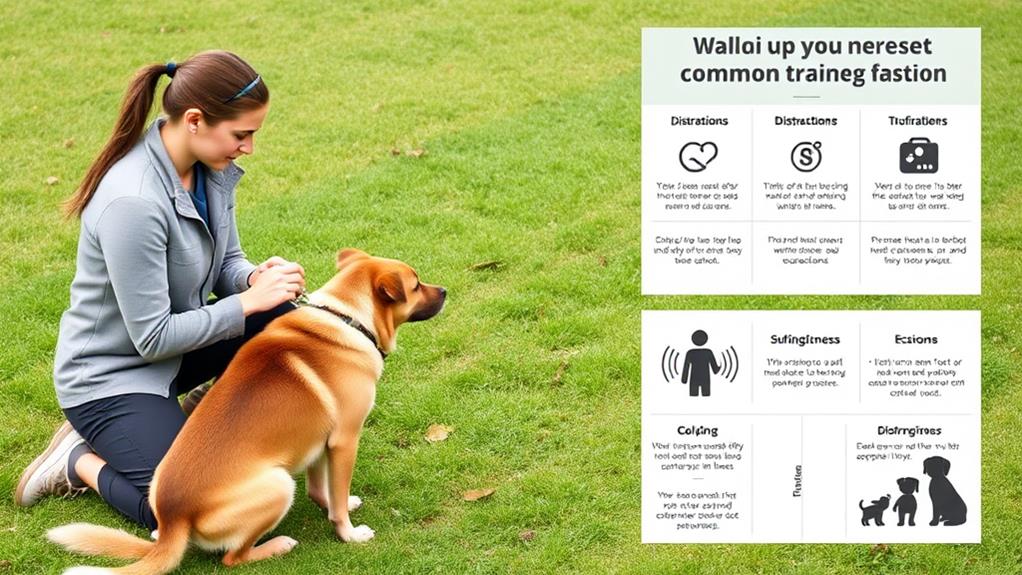
When teaching advanced tricks like "roll over," you might encounter some common issues that can hinder your dog's progress. One frequent challenge is your dog's reluctance to perform the trick. If that happens, check if your dog understands the cue or if you're moving too quickly in the training process. Sometimes, breaking the trick down into smaller steps can help.
Another issue is inconsistency in your dog's response. This could stem from varying your cues or rewards. Make sure you're using the same verbal and physical signals every time. If your dog seems confused, simplify your commands or add a visual cue to reinforce the behavior.
If your dog loses interest, try to keep training sessions short and engaging. You can also increase the value of your treats or mix in playtime to maintain motivation.
Lastly, if your dog seems frustrated, take a step back. It's okay to pause and revisit easier commands before attempting "roll over" again. By addressing these issues promptly, you'll help your dog build confidence and improve performance, making the training experience enjoyable for both of you.
Maintaining Training Consistency
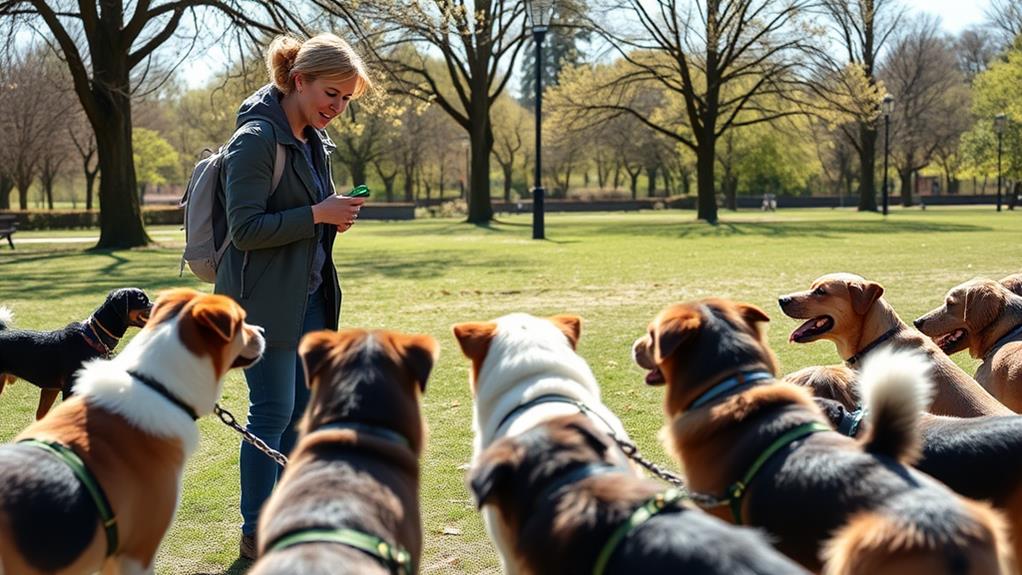
To guarantee your dog masters advanced commands, preserving steadiness in your training approach is critical. Consistency builds trust and helps your dog understand what you expect. If you're inconsistent, your dog may become confused, leading to frustration for both of you.
Set a Routine: Train at the same time each day. Dogs thrive on routine, and this helps reinforce learning.
Use Clear Cues: Always use the same verbal commands and hand signals. This clarity helps your dog connect the dots between the command and the action.
Stay Positive: Reward your dog immediately after they perform the desired behavior. This reinforces the connection and keeps your training sessions enjoyable.
Frequently Asked Questions
Can Clicker Training Be Used for Other Animals Besides Dogs?
Yes, clicker training can absolutely be used for other animals. You can train cats, birds, and even some farm animals. It's all about understanding their behaviors and using positive reinforcement to encourage desired actions.
How Long Should Training Sessions Last for Advanced Commands?
How long do you think your pet can stay focused? For advanced commands, keep training sessions between 10 to 15 minutes. Short, engaging sessions help maintain your pet's attention and reinforce learning effectively.
Is Clicker Training Effective for Dogs With Behavioral Issues?
Yes, clicker training's effective for dogs with behavioral issues. It reinforces positive behaviors, helping your dog understand what's expected. Consistency and patience are key, so keep sessions short and rewarding for the best results.
What Types of Clickers Work Best for Training?
Choosing the right clicker can feel overwhelming. You'll find that lightweight, handheld clickers with a clear sound work best. Experiment with different types until you discover one that feels comfortable and effective for your training sessions.
Can I Use Treats Instead of a Clicker?
You can definitely use treats instead of a clicker. Many trainers find that treats work just as well for reinforcing behavior, but consistency and timing are key to ensuring your dog understands the desired actions.
Conclusion
In mastering advanced commands through clicker training, you'll find a harmonious blend of patience and excitement. While challenges may arise, each setback offers a chance to strengthen your bond. The joy of watching your dog excel contrasts beautifully with the effort you've invested. Remember, consistency is key; as you navigate this journey together, celebrate the small victories. Ultimately, the trust you build will shine through in every command, transforming training into a rewarding experience for both of you.



